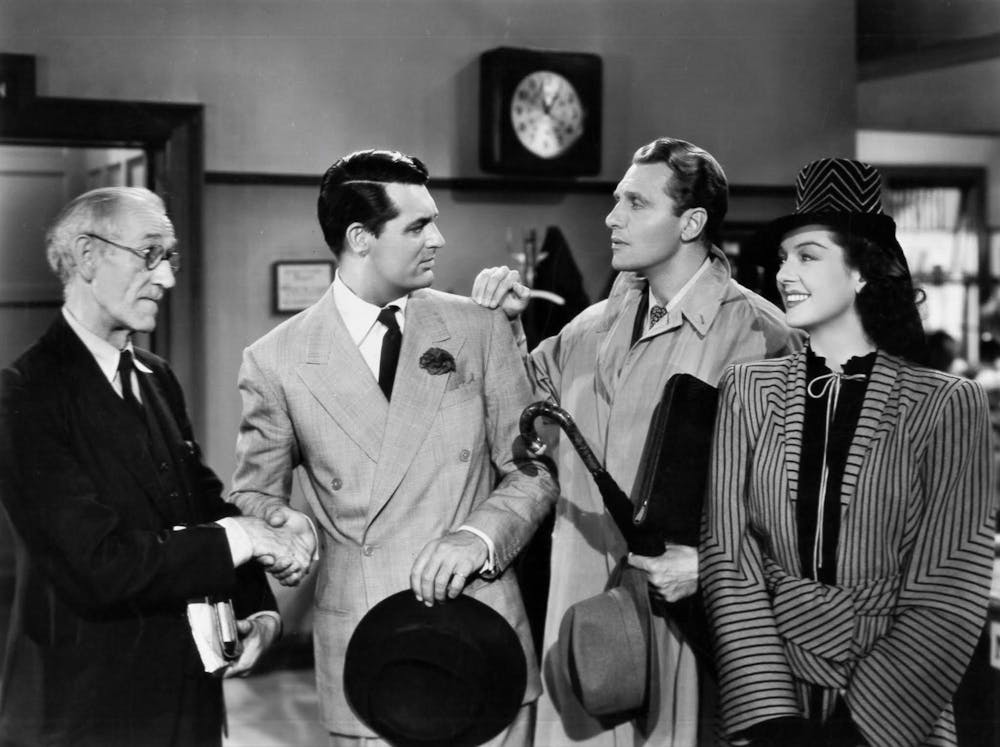The IU Cinema screened the classic 1940 film “His Girl Friday” on Sept. 7. While at the time of its release it was viewed in the gendered terms which were typical of the time period, a more modern analysis of the film shows that Hildy Johnson, the main character played by Rosalind Russell, was a woman ahead of her time.
“His Girl Friday” tells the story of Hildy, a star reporter who has divorced her husband – and editor – Walter Burns, played by Cary Grant. While the two argue constantly, they still have feelings for each other. When Hildy announces her intentions to quit her newspaper job and marry insurance agent Bruce Baldwin, Walter becomes determined to keep her from leaving.
Many movies from the 1930s and 1940s portray women as simply love interests, with most couples kissing and embracing at the end. For reference, the famous ending of “Casablanca” featured Humphrey Bogart and Ingrid Bergman staring at each other and kissing passionately outside the plane. “His Girl Friday” is an exception, with no embraces or passionate kissing.
Perhaps this lack of affection highlights the deeply unconventional nature of Hildy’s relationships with the men in her life. When the movie begins, one assumes from the endings of other movies of the period that she will go back to her ex-husband, leaving her nice-but-bland fiancé on the curb. However, Hildy’s choice is more complex, as she chooses the happiness found in her work over the societally sanctioned relationship Bruce offers her.
According to a paper by the Kentucky Historical Society, most movie heroines of the time ended up in their “proper place, in the arms of a man who could protect and cherish her and let her quit the career that took time away from home and family.” Hildy is unusual; she is a glaring exception.
While Hildy is in a relationship with Bruce because he “treats (her) like a woman,” the film contradicts her femininity. After stating that a man opens doors for women, Hildy proceeds to open a door for Walter. Through this juxtaposition, the film positions her as an equal figure in their relationship.
This theme of equality is not limited to her romantic relationships but is also seen in her professional relationships with male reporters. Despite the fact that in 1940, the majority of reporters were men, Hildy is portrayed as being equal to if not more talented than her male associates, who don’t appear threatened by her. During a press meeting at the local jail, the male reporters even lament the fact that she is leaving the business to become a housewife, a role they see as a waste of her talents.
In the era the film was produced, these feminist aspects were not celebrated. Advertisements instead billed the movie as “racy” and a “love story,” while trumpeting Cary Grant’s character’s ability to “tame the wildest woman.”
However, when viewed through a modern lens, Hildy’s ultimate desire for the newspaper business, her relationship with Walter and her declaration that “I’m no suburban bridge player, I’m a newspaper man!” brands her as nothing less than a revolutionary, proto-feminist icon.






